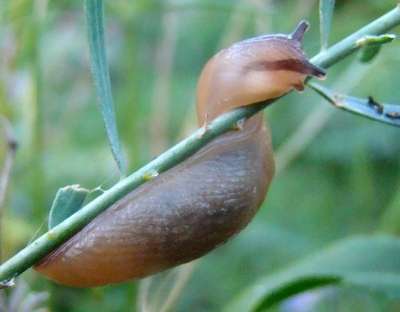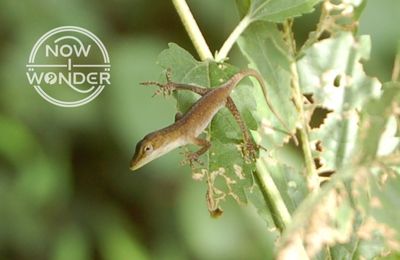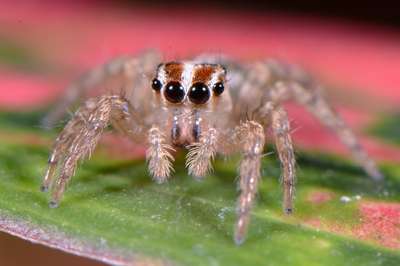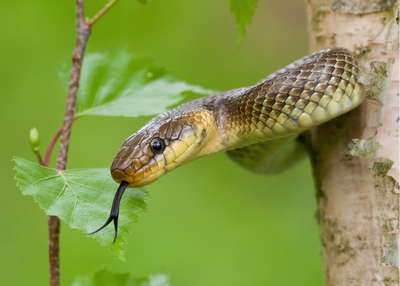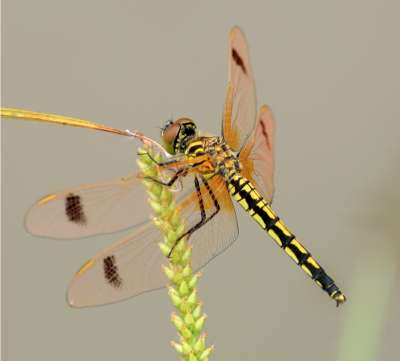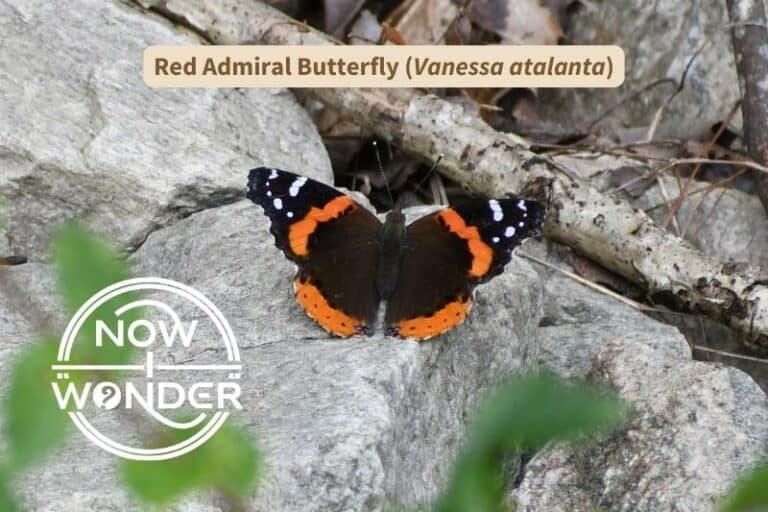Spiders are famous for constructing the most perfect passive insect traps the world has ever known – spider webs. Perfected over millions of years of evolution, spider webs capture and restrain a wide variety of flying insects long enough for the resident arachnids to kill and consume them.
On the other hand, dragonflies are famous for being very large, very powerful flying insects, and often share habitat with web-building spiders. So, it’s natural to wonder – do dragonflies get caught in spider webs?
Dragonflies get caught in large, vertical spider webs constructed by orb web weaving spiders of family Araneidae. Dragonflies who collide with orb webs adhere to the sticky silk; struggles to escape worsens their entanglement. Eventually, they are killed and consumed by the resident spiders.
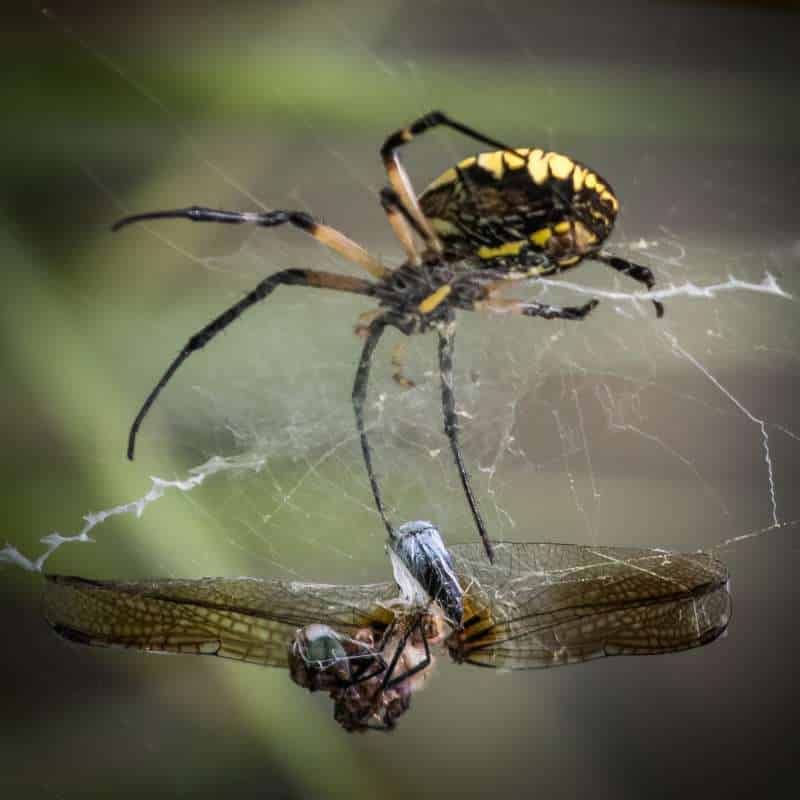
However, this answer is only the start of a bigger, more interesting story. Read on for the details of what happens after a dragonfly gets caught in a spider web.
Which spiders build the webs that capture dragonflies?
The spiders that spin webs likely to trap dragonflies are those species within the orb web weaver guild and family Araneidae. Known as “araneids” or “orb-weavers”, they often live in the same habitats as dragonflies, and construct large, sturdy, vertical capture nets out of sticky spider silk.
Orb weaver spiders range in size from tiny to some of the largest spiders found in the southeastern United States. Three large examples of species that spin webs capable of capturing dragonflies are pumpkin spiders (Araneus marmoreus), banded garden spiders (Argiope trifasciata), and yellow and black garden spiders (Argiope aurantia). Both pumpkin spiders and the garden spiders suspend their webs in vegetation and often live near water – areas through which dragonflies are likely to fly.
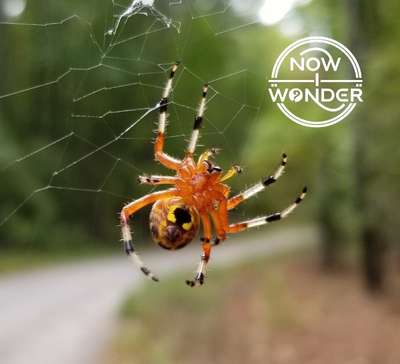
Orb-weavers are usually generalist predators that prey on whatever insects get caught in their web. They don’t target dragonflies specifically; their webs are passive traps that catch and hold at random. Bees and wasps (order Hymentoptera), grasshoppers (order Orthoptera), beetles (order Coleoptera), and butterflies and moths (order Lepidoptera) make up the majority of Argiope prey (Carrel and Deyrup, 2019). However, dragonflies provide orb weaver spiders a great deal of nutrition when consumed, thanks to their large size.
What are the characteristics of webs that capture dragonflies?
Spider webs capable of trapping dragonflies are vertically oriented, and suspended in midair from non-sticky support lines attached to vegetation or other structures. The capture area is a round, flexible net, made up of sticky strands spun in spiral from a central point or hub.
Spiders construct their insect capture webs from spider silk, and are capable of spinning several different types of silk with different characteristics at will.
Spider silk is extremely strong and stretchy. It is capable of absorbing and muting significant force without breaking, such as the impact of a large dragonfly colliding with the web. In fact, spider silk is so strong, a pencil thin strand would be strong enough to stop a 747 jet plane in midair (Ring and Carde, 2009).
Upon contact with the capture spiral, insects are trapped by the sticky strands and may get further entangled in additional strands while struggling to escape.
The capture area of spiral webs vary significantly across different species of orb weavers, and this can make a difference as to whether dragonflies are caught. For example, female Argiope aurantias are consistently heavier than Argiope florida females and have longer legs. Researchers James E. Carrel and Mark Deyrup found that A. aurantia females built webs an average of 1.3 – 1.5 times wider and taller than those of A. florida spiders, resulting in a 1.9 times greater effective capture field. Dragonflies were caught by A. argiope webs but not by A. florida webs (Carrel and Deyrup, 2019).
What happens to dragonflies caught in spider webs?
Dragonflies caught in spider webs are poisoned by the resident spiders’ venomous bites or left trapped in the web to die of natural causes, such as exhaustion or dehydration. Unless they are able to escape the entangling webs, dragonflies are consumed by the resident spiders eventually.
Spiders specialize in killing and consuming insects; orb weaver spiders specialize in killing and consuming flying insects trapped in their webs. However, an entangled dragonfly may still be mobile enough to injure a spider in self-defense.
Dragonflies are strong insects, and much larger than most orb weaver spider species; possible exceptions being smaller dragonfly species when compared to the larger Argiope spider species, such as A. aurantia and A. trifasciata. Dragonfly mouth parts are powerful enough to bite through spider carapaces easily, and these insects sport long legs lined with sharp spikes. Therefore, spiders must be cautious in how they go about killing dragonflies snared by their webs.
A trapped dragonfly may die in several different ways, depending on factors such as the resident spider species and individual characteristics like the spider’s size relative to the dragonfly and the spider’s hunger level.
Dragonflies may die a quick death
The first option for a spider confronted by a dragonfly trapped in its web is to attack it immediately.
A spider may rush out, bite the trapped dragonfly, inject its killing venom, then ingest the liquefied body tissues at its leisure.
Spiders who are relatively large compared to the dragonfly prey, who are especially hungry, or who are attacking dragonflies deemed tightly constrained by the web may favor this approach. Alternatively, a spider may attack immediately if the dragonfly is only lightly held by the web and on the verge of escape.
Dragonflies may be mummified
The second option for a spider confronted by a dragonfly trapped in its web is to further confine it by mummifying the insect in silk.
A spider may wrap a trapped dragonfly in many strands of strong, thin silk to render it helpless and unable to escape.
Spiders who are relatively large in relation to the dragonfly may opt to administer the killing bite through the silk bindings immediately; those who are smaller or less hungry may choose to wait for the dragonfly to die of exhaustion or dehydration before beginning to feed.
Dragonflies may die a slow, lingering death
The third option for a spider confronted by a dragonfly trapped in its web is to wait for it to die.
A spider can simply rely on the strength of its web to prevent the dragonfly’s escape, and wait patiently while the insect struggles. A trapped dragonfly will eventually die, at which point the spider can safely feed without risk to itself.
This approach may be seen in smaller spiders and those who’ve eaten recently.
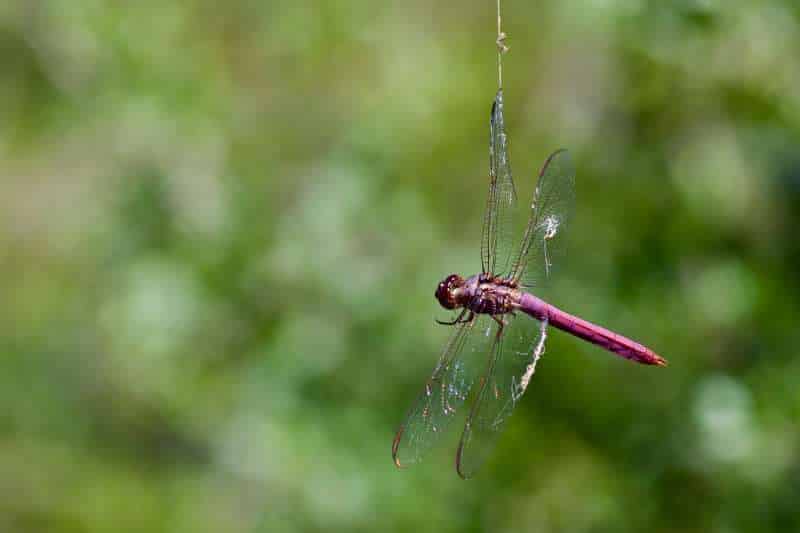
Why can’t dragonflies just avoid spider webs?
Dragonflies have superb vision across visual fields of nearly 360 degrees, and can see movement, color, polarized, and ultraviolet light (Dunkle, 2000). They are also incredibly agile in flight. So, if spider webs are so dangerous to them, and they can both see and fly extremely well, why do dragonflies fly into webs in the first place? Why don’t they just avoid spider webs completely?
Dragonflies may fail to see spider webs because webs are transparent in visible light, blend into the background in ultraviolet light, and are often suspended in mid-air across wide expanses of space. They may also collide with webs when distracted by pursuing prey or fleeing from other predators.
Spider webs are transparent in visible light – unless the sun shines off the strands at just the right angle, or the strands are covered with dew, a web is essentially invisible.
Some spiders manipulate the visibility of their webs in the ultraviolet spectrum. Argiope orb weaver spiders build their webs out of silk with low UV reflectivity, which decreases contrast and makes the webs harder to see. However, they also decorate their webs with strands that shine brightly in ultraviolet light. As many insects upon which dragonflies prey also shine in the ultraviolet spectrum, these web decorations may trick tempt dragonflies into flying dangerously close to the webs (Craig and Bernard, 1990).
Also, dragonflies fly quickly through their habitats in pursuit of prey or mates, and may not notice a web until it’s too late. They may be distracted and chase the object of their attention straight into webs. Depending on the span between web strands, a small midge might fly straight through the web, while the much larger dragonfly makes contact and becomes trapped. Or the resident spider gets a smorgasbord by capturing both insects.
Finally, many capture spirals are suspended in mid-air from extremely long support lines that span spaces that otherwise appear wide open and safe. With lots of empty air space above, below, and to the sides of the web, a dragonfly may fly past a web multiple times without incident through sheer luck. But a slight alteration in its flight path may put it on a collision course with the capture net.
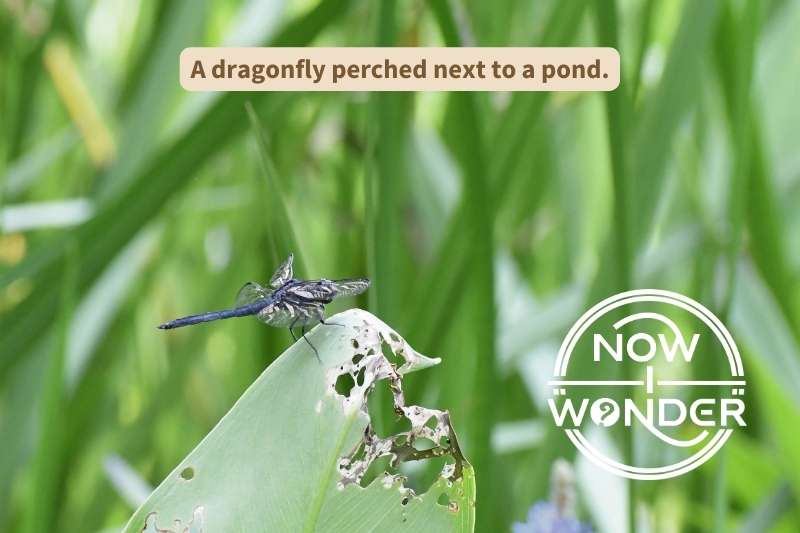
Do spiders always eat dragonflies caught in webs?
Although most dragonflies caught in spider webs are eaten by the resident spiders, exceptions occur. Dragonflies may be caught in webs maintained by spiders which are too small to consume insects the size of dragonflies or caught in abandoned or empty webs.
Some orb weavers build capture webs that are extremely large compared to their own body size. Webs are amazingly strong structures, so tiny spiders may catch prey like dragonflies that are simply too large for them to handle.
Small orb weavers may be unable to trapped dragonflies. Dragonflies are arthropods and thus are covered in stiff exoskeletons. A small spider’s fangs may be too small or weak to pierce a dragonfly’s exoskeleton, even the relatively thin layer covering its abdomen. In that case, the spider has no choice but to ignore the dragonfly in favor of smaller insects it can actually eat.
Sometimes dragonflies are unlucky enough to be caught in empty webs. Spider silk is resistant to decay, so can endure long after the spiders who created the webs are gone. A resident spider may have been eaten by a predator or simply died off at the onset of winter, leaving its web still hanging. A dragonfly may fly into the empty web, become trapped, and die without the spider getting any benefit at all.
Can dragonflies escape from spider webs?
Dragonflies can escape spider webs but rarely. Escape is more likely when a dragonfly is only loosely in contact with the sticky web strands, entangled in the non-sticky support lines only, or caught in the lower part of the vertical web net.
First, a dragonfly is more likely to escape a web if it is entangled in one of the non-sticky support lines only, or only minimally in contact with the sticky spiral. The more points at which a dragonfly’s body contacts the sticky spiral strands of the capture web, the harder it will be for the dragonfly to escape.
Second, a dragonfly is more likely to escape a web if it collides with the lower part of the net. Gravity pulls insects toward the ground; heavy insects can sometimes be pulled completely free if only loosely held by the web. But a dragonfly that tumbles toward the ground from a point high in the capture net may contact the web again as it falls and be re-captured (Zschokke et al, 2006).
Conclusion
Spiders and dragonflies are both highly adapted and highly successful predators of flying insects. Unfortunately for many dragonflies, they are flying insects themselves, and are therefore on the menu of orb-weaver spiders who evolved the ability to weave the world’s most perfect insect trap.
Related Now I Wonder Posts
For more information about yellow and black garden spiders (Argiope aurantia), check out this other Now I Wonder Post:
For more information about dragonflies in general, check out these other Now I Wonder posts:
- Is a dragonfly a fly?
- Can dragonflies walk?
- What do dragonflies do at night?
- What is the difference between a dragonfly and a damselfly?
- Dragonflies vs. Butterflies Part 1: First Comes Form
- Dragonflies vs. Butterflies Part 2: Second Comes Function
- Are there different types of dragonflies?
- Dragonflies vs. Horse Flies: Allies vs. Enemies
- What is the difference between dragonflies and mayflies?
- Dragonflies vs. Mosquito Hawks: What’s the difference?
- Dragonflies vs. Fireflies: What are the differences?
References
Carrel, James E., and Deyrup, Mark. 2019. “Analysis of Body Size, Web Size, and Diet of Two Congeneric Orb-Weaving Spiders (Araneae: Araneidae) Syntopic in Florida Scrub.” The Florida Entomologist 102 (2) (06): 388-394. https://doi.org/10.1653/024.102.0215
Craig, Catherine C. and Bernard, Gary D. 1990. “Insect Attraction to Ultraviolet-Reflecting Spider Webs and Web Decorations.” Ecology 71 (02): 616-623. https://doi.org/10.2307/1940315
Dunkle, Sidney W. 2000. “Dragonflies Through Binoculars: A Field Guide to Dragonflies of North America.” Cary: Oxford University Press, Incorporated.
Resh, Vincent H., and Cardé, Ring T., eds. 2009. Encyclopedia of Insects. San Diego: Elsevier Science & Technology.
Zschokke, Samuel, Hanaut, Yann, Suresh, Benjamin P., and Garcia-Balllinas J. Alvaro. 2006. “Prey-Capture Strategies in Sympatric Web-Building Spiders.” Canadian Journal of Zoology/Revue Canadienne De Zoologie 84 (7) (07): 964-973. https://doi.org/10.1139/z06-074

